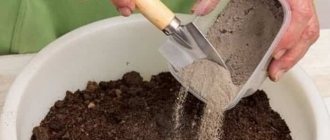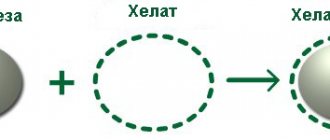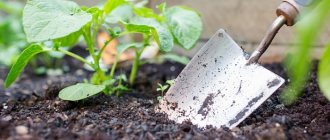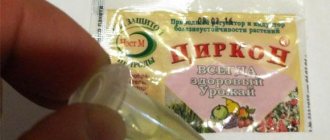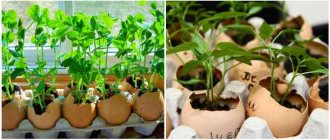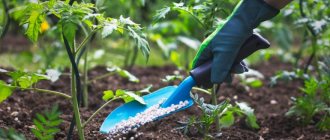For which plants is coffee fertilizer suitable?
And yet, sleeping coffee is a top dressing that is not suitable for every plant. Therefore, before you widely use it in your garden, you need to study for which plants it is most effective to use coffee grounds as a fertilizer. It is most useful for flowers that prefer low pH levels - azaleas, hydrangeas, heathers and rhododendrons. Due to the large amount of potassium in the composition, coffee grounds can be used as a fertilizer when growing vegetable crops, such as tomatoes, potatoes, cucumbers, and peppers. Feeding fruit trees with dormant coffee will also help to significantly increase their fruiting. Magnesium contained in coffee is beneficial for berry bushes. Magnesium and potassium will help you get a high yield of root crops, while nitrogen is indispensable for green crops.
Among house plants, roses, palm trees, ficuses and ferns, as well as violets and asparagus respond best to coffee fertilizing. When using coffee grounds as fertilizer for indoor plants, it is recommended to first drain and dry them. If you simply pour the remains of coffee from a cup into the pot, most likely there will be no benefit, but on the contrary, the soil may become crusty and begin to mold. To prevent this, you need to mix the prepared grounds with soil suitable for this type of plant.
Coffee with sugar or milk should not be used to feed garden, vegetable and flower crops, since sugar attracts ants, and milk provokes the development of putrefactive processes in the soil, which can harm the root system of plants.
How to use fertilizer correctly?
Before you start using coffee grounds, you need to prepare them.
With proper use and compliance with dosages, you can get excellent results in the growth, flowering and longevity of plants.
Watering with coffee
Attention! The grounds are often added to irrigation water to get rid of pests that cannot tolerate the pungent odor.
In this case, it is not necessary to dry it. Just dilute it in water. Due to the rich mineral composition, such watering will serve as an excellent fertilizer for plants.
Use with earth
When mixing with soil, pre-dried coffee is usually used.
Using wet cake can promote the development of fungus and mold in pots. To do this, after each cup drunk, the remains are poured onto paper or newspaper to dry. There are several ways to use coffee grounds:
- It is poured into the bottom of the pot as a drainage layer.
- When planting flowers, it is mixed with soil in advance.
- To feed indoor plants, mix with the top layer of soil: 1-2 teaspoons per pot.
- It is poured in a thin layer on the surface of the earth.
Compost
By adding cake to compost, its qualities improve:
- The composting process is accelerated due to the presence of nitrogen in the composition.
- The smell of coffee attracts earthworms. This has a positive effect on the composition of the compost.
- The aeration process is improved.
Reference. However, too much cake in the compost can negatively affect its composition. It is not recommended to add more than 20% of the total amount of compost.
Seed Supplement
You can add dried grounds to the seeds. This natural fertilizer will promote faster germination.
At the same time, you should not use cake when growing seedlings.
Methods of use
Watering
Before using used coffee as fertilizer when watering plants, it must be diluted in a sufficient amount of liquid. To prepare a solution for 10 liters of water, 1 cup of grounds is required. The cake is poured with a small amount of water and left to swell for about a day. After swelling, the amount of liquid is adjusted to the calculated value and used for watering plants.
After feeding the plants with coffee grounds, it is advisable to water the soil again, but with clean water. This technique will allow the minerals to be slowly released to nourish the plants. When planting bushes, you should spill the soil with coffee solution at the rate of 1 liter per bush.
Mulching
Coffee grounds can also be used to mulch plantings to protect the soil from drying out, repel pests and improve the structure of the soil. However, it must be remembered that when using grounds as mulch, as in the case of using coffee cake as fertilizer in a garden at the dacha, you should dry it thoroughly to prevent the development of mold.
Soil Supplement
Dried ground coffee as a fertilizer can be added to the planting hole or hole before planting to improve the soil structure. This technique makes the soil more drained and loose, which ultimately has a positive effect on the health of the plants and the volume of the harvest. When used on light soils, the grounds act as a binding component. In this case, fertilizing is applied to the top soil layer at the rate of 200 ml per 1 m².
Compost
To speed up the ripening of compost, it is enough to pour coffee infusion on each layer no more than 10 cm thick. Coffee grounds act as nitrogen components that trigger an exothermic reaction inside the compost heap, in other words, heating it up, which makes the compost ripen much faster. This method is so effective that some summer residents specifically purchase inexpensive varieties of ground coffee and sprinkle layers of compost over them.
For seedlings
Recently, the method of growing vegetable seedlings on a coffee substrate has become popular. But in order to prevent soil depletion, it is necessary to feed the seedlings with complex fertilizers from time to time.
Pest protection
Coffee cake as a fertilizer in the garden is also very effective for protecting plants from mature individuals of harmful insects - ants, snails, aphids, slugs. According to the experience of some gardeners, coffee can also destroy pest larvae, in particular mosquitoes and garden bugs. This product is not as effective as insecticides, but it is also much safer.
Which plants can you add coffee fertilizer to and how to use it
First of all, the grounds are added in small quantities to the soil when replanting the plant. Then it becomes more loose and airy, allowing the plant to receive a uniform amount of oxygen.
You can also water plants in which various pests have appeared with the leftover coffee. Coffee can be a worthy and inexpensive replacement for modern and expensive fertilizers. It is for this reason that cold and fresh grounds do not need to be dried immediately. Simply water the plant with the leftover coffee.
The grounds can be added not only to flowers, but also to various vegetables. For example, carrots. If its seeds are watered with coffee or a small amount of grounds, the fruits will ripen faster and will soon delight you with a sweetish, pleasant taste. The same fertilizer should be used to fertilize tomatoes. However, there are certain features in using grounds that those who use coffee as fertilizer need to know:
1. You need to water not with fresh grounds. Coffee that you just drank has high acidity. If you fertilize plants with it without drying it, you can burn the roots. Therefore, the grounds are first dried and then added to the plant. 2. If there is too much grounds in the pots, a crust may appear, which impedes the flow of air to the roots of the plant. Therefore, you should not use it too often. It is best to use other types of fertilizers from time to time. 3. If you spread fresh grounds, mold may form in them. When dried, the grounds repel pests and slugs. 4. Not all plants love it. 5. The grounds can also change the color of the inflorescences. :For example, pink flowers may turn turquoise or blue. It all depends on the characteristics of the plants.
Where should you not use coffee grounds?
Coffee grounds are rich in nitrogen, so if you use them in excess, you can burn the root system, which will lead to the death of the plant.
Poorly dried coffee waste can cause mold and fungal diseases to develop and kill plants. Additionally, coffee fertilizer is not suitable for tradescantia, asparagus, geraniums and other crops that prefer more alkaline soil. Fertilizing with cake can change the shade of rose flowers.
What are the benefits of coffee?
When growing plants, we usually buy fertilizers to feed them, considering this the best solution. Ready-made preparations have a well-balanced composition and are easy to use, but they can change the quality of the soil, lead to soil salinization and the destruction of beneficial organisms that live in it. A safer solution would be to use natural fertilizers. It is more difficult to overdose them, and they are also not harmful to the soil and the microorganisms living in it.
What's in coffee?
Coffee grounds contain useful substances, valuable microelements that are important for the proper development of plants:
- Phosphorus – affects the proper development of the root system, stimulates flowering, fruiting, and seed formation. Improves soil quality.
- Magnesium is a building block of chlorophyll (the green parts of plants). The trace element is crucial for photosynthesis and the absorption of solar energy by flowers. Signs of magnesium deficiency are yellow, rusty spots on the leaves, slow development of young leaves.
- Potassium is especially important for young seedlings, it stimulates growth, affects flowering, and stimulates the formation of new shoots. The macroelement supports the rational use of water in the plant and the correct course of metabolic processes. Potassium improves resistance to stress factors (frequent changes in temperature, air humidity, drought, diseases, especially fungal ones). Without potassium, flowers cannot develop normally and often become stunted.
- Nitrogen compounds - support the proper development and growth of plants, regulate the consumption of other macroelements (phosphorus, potassium), improve the condition and appearance of flowers. Symptoms of nitrogen deficiency are faded color of stems and leaves, slow or inhibited growth of above-ground and underground parts, chlorosis (yellowing of leaves).
Substances from coffee residues are released relatively slowly, making them a natural fertilizer with a long-lasting effect. Therefore, you can use ground coffee as a long-lasting fertilizer for indoor and garden plants.
What else is useful about the grounds:
- Soil mixed with coffee grounds is appreciated by acidophilic plants (which like soils with an acidic pH).
- Coffee residue in the garden can neutralize excess calcium from tap water.
- They perfectly loosen the soil and reduce its tendency to dry out.
What plants benefit from coffee?
Coffee grounds have a slightly acidic pH, making them ideal as fertilizer for indoor flowers that love acidic soil and acidophilic garden plants.
Reference. Acidophilic plants are those that grow in acidic soils.
Garden plants that love acidic soil include:
- hydrangeas;
- heathers;
- ferns;
- Erika;
- rhododendrons;
- sorrel;
- cranberry;
- blueberry;
- mosses;
- some azaleas, vegetables such as tomatoes;
- strawberry.
Which potted flowers love acidic soil:
- fern;
- anthurium;
- camellia;
- begonia;
- jasmine gardenia;
- caladium;
- spathiphyllum;
- codiaum;
- Saintpaulia;
- Stephanotis profusely flowering.
Useful tips
Dried coffee grounds are very light, so when used dry, the slightest breeze can blow them away from the garden bed. To prevent this from happening, it is recommended to mix the cake with soil or sawdust and plant it shallowly in the soil.
If the color of the leaves of your plants changes after processing the coffee grounds, you should stop using the coffee grounds as fertilizer. You can carefully strain the coffee infusion and use only the liquid for watering, and use the grounds, for example, to feed conifers.
It is recommended to prepare fertilizer from coffee grounds for the garden, using the cake from the preparation of only natural coffee. It is not advisable to use instant powdered and granulated coffee for this purpose, since their nutritional value is not great.
Ways to use sleeping coffee
Budget fertilizer is used in several variations:
- mixing with seeds;
- mixing with soil;
- mulching the soil;
- digging;
- watering;
- making compost.
Let's consider each of the options in more detail.
Mixing with seeds is a current method of application when planting seeds in open ground in furrows. Small planting material of carrots, radishes, parsley, fennel, cilantro is mixed with dried coffee mass in a ratio of 1:3 and sown in the prepared hole. In this case, ground boiled grains will ensure not only optimal drainage, but also uniform distribution of seeds. At the initial stage of growth and development of root crops, bait will provide them with the necessary amount of phosphorus and nitrogen.
Video about options for using home organics.
Mixing with soil and mulching
Mixing with soil is a technique used when picking tomatoes. Coffee cake is mixed with soil in a ratio of 1:10 and poured into containers where the seedlings will be buried. The bait begins to act immediately after the first watering. By absorbing moisture, coffee grains release nitrogen into the soil, which is necessary for the growth and rooting of young tomatoes.
When transplanting berries into open ground, add 1-2 tbsp to the bottom of the planting hole. spoons of boiled ground coffee.
Mulching the soil is applicable for both indoor plants and those growing in open ground. The ground around the trunk is sprinkled with dried raw materials and spilled with plenty of water. Each time you irrigate the soil under the bush, the nitrogen released from the grains will penetrate into the soil along with moisture and nourish the root system of the plant.
Digging, powdering and watering
Digging is a method that requires special care. The soil next to the tillering node (main stem) is dug in several places to a depth of 3 to 6 cm, depending on the size of the hole. Add 1 tbsp to each hole. spoon of grounds, cover with earth on top. Digging allows you to avoid the formation of a crust on the soil surface, which will require constant loosening and moistening.
An alternative to digging in is powder. The soil in the hole or pot is mulched with dried grounds. Sprinkle soil on top of the fertilizer; as a crust forms, the surface is loosened and irrigated with warm water.
Ready to use grounds
The most effective way to feed is to moisten the soil under the bush with a weak solution of coffee. To do this, ground coffee is boiled until fully cooked (1 glass) and diluted with cool water in a 1:1 ratio. The prepared mixture is watered over seedlings, bushes, root crops and flower stalks.
Making compost
Compost is an excellent fertilizer for flowers. To prepare it, sleep organic matter, rotted straw, fallen leaves, and bone meal are used in proportions of 2:1:1:1. The volume of the workpiece should not exceed 400 g. The mixture is poured into a compost container, 400 g of chernozem is added and water is poured until it becomes a thick porridge.
Using a wooden stick, holes are made in the compost to saturate the raw material with moisture and accelerate the decomposition process.
Over the next week, the mixture is watered generously and the recesses are renewed daily. A month later, earthworms are added to the compost and the soil in the holes is fertilized with them. Before using the infusion as a fertilizer, you need to make sure it has cooled down. Hot compost can scald and destroy plants.
Why you shouldn't use coffee
Unfortunately, despite its many benefits, coffee is not entirely perfect:
- Various studies have found that coffee grounds inhibit the growth and development of seedlings and seed germination.
- Coffee is blamed for the caffeine it contains, which has allelopathic properties in relation to seeds and seedlings. It should not be used for cuttings or growing seedlings. Sometimes coffee is bad for the growth of certain plant species (such as Tradescantia), so use it in moderation and observe how the plants react.
Reference. Allelopathy (Greek allelon - mutual and pathos - suffering) is the harmful effect of chemical substances secreted by plants or fungi of a given species or obtained as a result of the decomposition of these plants or fungi. Allelopathy is mainly due to chemicals released into the environment that affect the growth of other organisms, mainly plants and bacteria. Substances can inhibit the germination, growth and development of other plant species living in the immediate vicinity.
- There is no need to overuse coffee fertilizers for plants that like alkaline soil. These include:
- lavender;
- thyme;
- oregano;
- grape;
- Snapdragon;
- oleander;
- bougainvillea;
- Carolina yucca.
You should never go overboard with the grounds. Of course, it will not completely replace specialized fertilizers - it does not contain all the ingredients necessary for plants.
Coffee grounds can have many beneficial uses around the home. In an indoor pot or garden, it becomes an excellent fertilizer for flowers and other plants. Since it absorbs odors, it will also slightly freshen the air in the apartment. So let's not treat the grounds as waste - they will become valuable environmental fertilizers. It can be used as a long lasting organic fertilizer, mulch, compost, substrate or repellent.
How else to use grounds
Coffee grounds can not only enrich plants with useful minerals, but also protect them from a wide variety of pests. Insects such as ants, slugs, snails, aphids and others do not like it. Using grounds allows you to protect your plantings safely and inexpensively. This product can also be used to prevent the appearance of insect pests.
Coffee grounds can be simply indispensable in your garden. This is an excellent tool for changing the structure of the soil. Adding grounds will make heavy and clayey garden soil looser and lighter. To do this, the cake is added to the soil and loosened regularly.
Spilled coffee and leftovers can also attract beneficial insects. Including earthworms. This property is especially important for making compost. Worms, processing the contents of the compost pit, loosening it, contribute to the rapid ripening of the compost.
Cats do not like the coffee aroma. Using grounds, you can stop your pet from shitting under your favorite bush. You just need to sprinkle the dry product in a thin layer and do not water it for a while.
Coffee (grounds, cake, spent coffee) as fertilizer for indoor plants
Everyone in our family loves coffee and enjoys drinking this drink.
As a result, a fairly large amount of coffee grounds remains at all times. For a long time I threw it away until I accidentally came across information that, it turns out, many flower growers have been successfully using coffee cake as a useful flower food for a long time. Moreover, fertilizer is used with equal success in the garden and for better growth and development of indoor plants. We'll talk about the latter today. Let's look at how to properly use coffee grounds as fertilizer for flowers growing indoors.
Coffee grounds as compost
Minerals, primarily nitrogen, contained in coffee residues tend to be released gradually under the influence of microorganisms. This makes coffee grounds a valuable component of garden compost. To do this, it is collected and placed in a compost pit. The thicket promotes rapid rotting of the contents of the pit and improves its mineral composition.
Coffee cake can be added directly to planting holes for garden ornamental and fruit-bearing plants. To do this, dry cake is mixed with prepared soil. The plant is planted in the prepared soil and watered abundantly.
Helpful tip: Try using compost containing coffee residue to grow mushrooms. According to reviews from those who used this method, productivity increases by 2-3 times.
Contains many microelements
The remains of the tea leaves can be safely poured into the soil of your home flowers. Over time, it rots, and the tea leaves turn into good leaf soil, which will be enriched with organic matter. This soil contains nitrogen and phosphorus. This will cause the leaves of the plant to acquire a rich green color, their growth will be strengthened and the number of buds will increase. Iron is also involved in photosynthesis.
Coffee grounds contain at least 2% nitrogen, as well as potassium, magnesium and calcium. In terms of nitrogen composition, coffee residues can be compared to mowed grass, the use of which leads to accelerated growth. It also contains valuable vitamins and microelements.
Types of fertilizers for crops
There are two types of fertilizers:
Mineral fertilizers are synthetic fertilizers created by the chemical industry.
There are such feedings:
- complex, containing nitrogen, phosphorus, potassium;
- single-component, for example, nitrogen.
Organic are supplements that are obtained naturally. This can be bird and animal manure, compost, wood ash. There are supporters of both types of fertilizers. The best results come from a reasonable combination of organic and mineral fertilizers.
Using coffee grounds in the garden
Spent dry coffee is poured under the plant, then the soil is lightly loosened. When watering, beneficial substances will be released and enter the soil, gradually enriching it.
When using this fertilizer in the garden, it is dug into the ground under the plants. Using a shovel, dig up the ground to a depth of about 5 cm. Dry grounds are added to the loose soil. For one tree - 1-2 cups, depending on the size. Then the grounds are sprinkled with earth and lightly compacted.
Helpful advice: do not pour a lot of grounds (so that it covers the entire ground under the plant). In this case, when watering, a crust may form, which will interfere with the access of oxygen to the roots. Do not add grounds to the soil for seedlings. It will make the soil heavier and slow down germination.
Beneficial features
The coffee drink contains nitrogen in a percentage of 1.5% , which is equal to the amount of it present in rotted herbs, and they are known to be an organic fertilizer.
The raw materials also contain chemical elements such as calcium and magnesium , as well as phosphorus , which plants need most. The main task of these substances is to form ovaries, improve flowering, and also have a positive effect on the root system.
If indoor plants bear fruit, the presence of microelements in the soil contributes to productivity.
Nitrogen is a growth stimulant, positively influencing plant development. Calcium nourishes not only the root system, but the leaves and stem. Potassium is necessary for flowers that grow outside (or on the balcony) to make them more resistant to frost.
In addition to the listed elements, coffee contains copper, carbohydrates and iron , so we can say with confidence that this type of fertilizer is organic and will have a beneficial effect on indoor plants. If you want to furnish a room with flowers in flowerpots, it is enough to use one ingredient to get a good soil that promotes flowering.
For a long time it was believed that coffee grounds as a fertilizer could only be used on alkaline soils and for plants that need increased soil acidity, as it was thought that it increased it. However, today experts say that coffee has neutral acidity, despite the fact that sometimes there is an aftertaste in the drink.
During the cooking process, the acid is washed out, so it is absent in the grounds - thus, this fertilizer will not affect the acidity of the soil in any way.
The advantage of coffee fertilizer is that, thanks to cultivation, the soil becomes looser . This will slightly change the condition of the soil, which will become more receptive and will be able to absorb moisture better. The thicket will also allow oxygen to easily penetrate through the porous soil into the root system, and loosening will become easier.
The smell of coffee has a negative effect on insects , so the midge will not attack the plant, and this problem is very common.
The cake nourishes the stems and accelerates the growth of flowers. It also often performs the task of compost , which is most often used on outdoor plants. Of course, to get a positive result, you need to properly prepare the fertilizer and apply it in certain proportions.

